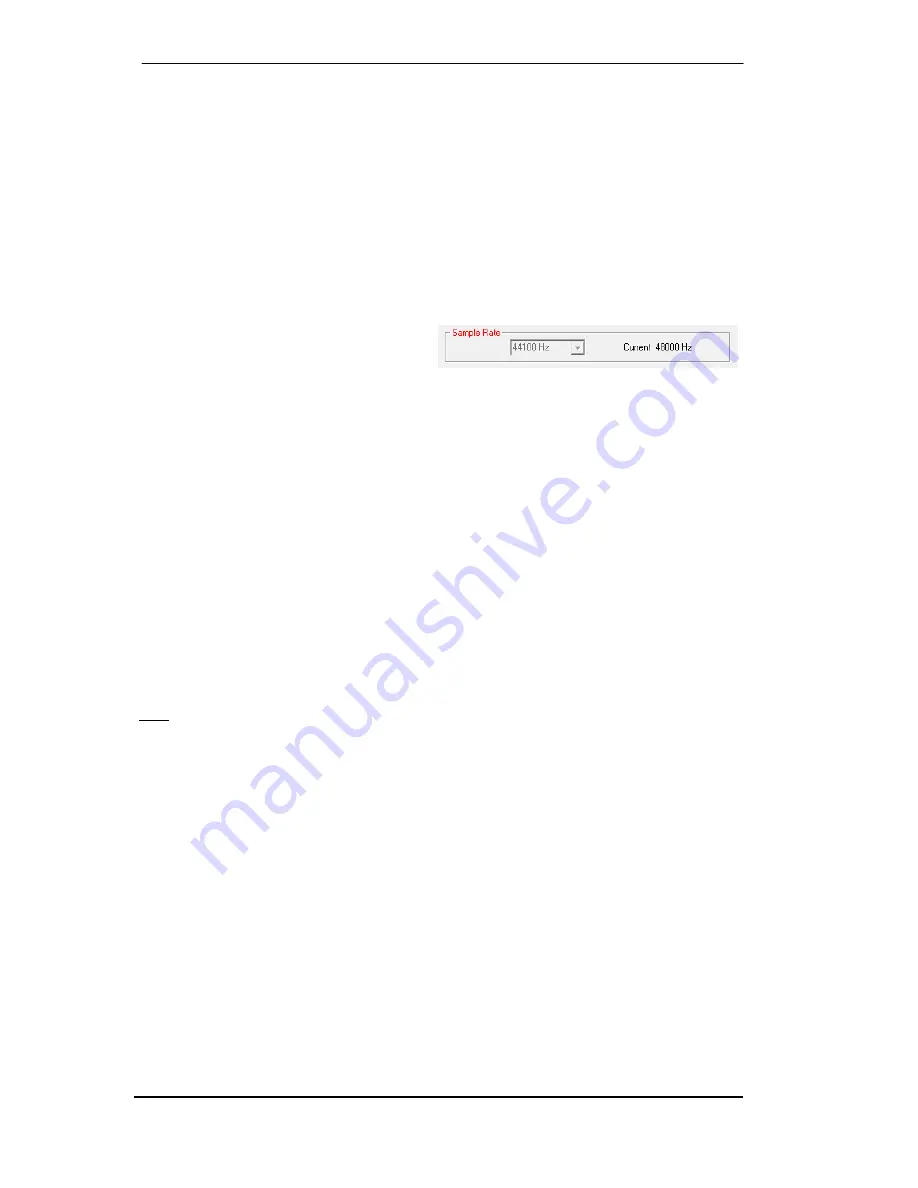
40
User’s Guide ADI-2 DAC
© RME
!
21.2 Clock Modes - Synchronization
In the digital world, all devices must be either Master (clock source) or Slave (clock receiver).
Whenever several devices are linked within a system, there must always be a single master
clock.
A digital system can only have one master! If the ADI-2 DAC’s clock mode is set to 'In-
ternal', all other devices must be set to ‘Slave’.
To cope with some situations which may arise in studio practice, defining a
sync reference is
essential. RME’s exclusive
SyncCheck
technology enables an easy to use check and display
of the current clock status. In the State Overview screen the column SYNC will show for all digi-
tal inputs whether there is a valid signal (Lock, No Lock) for the optical input, or if there is a valid
and
synchronous signal (Sync). See chapter 15.3.
Under WDM the ADI-2 DAC will (has to) set
the sample rate. Therefore the error shown to
the right can occur. An AES, SPDIF or ADAT
signal with a sample rate of 48 kHz is used as sync source, but Windows audio had been set to
44100 Hz before. The red color of the text label signals the error condition, and prompts the
user to set 48000 Hz manually as sample rate.
22. Operation and Usage
22.1 Playback
In the audio application being used, ADI-2 DAC must be selected as output device. It can often
be found in the
Options, Preferences
or
Settings
menus, as
Playback Device, Audio Devices
etc.
Increasing the number and/or size of audio buffers in the application (WDM) or the RME Set-
tings dialog (ASIO) may prevent the audio signal from breaking up, but also increases latency
i.e. output is delayed.
Please note that currently Windows WDM is limited to 384 kHz. 768 kHz can only be used via
ASIO.
Note: Since Vista the audio application can no longer control the sample rate under WDM.
Therefore the driver of the ADI-2 DAC includes a way to set the sample rate globally for all
WDM devices, found within the Settings dialog. See chapter 21.1.
22.2 Multi-client Operation
RME audio interfaces support multi-client operation. Several programs can be used at the same
time. The formats ASIO and WDM can even be used on the same playback channels simulta-
neously. As WDM uses a real-time sample rate conversion (ASIO does not), all active ASIO
software has to use the same sample rate.
Inputs can be used from an unlimited number of WDM and ASIO software at the same time, as
the driver simply sends the data to all applications simultaneously.
RME's sophisticated tool
DIGICheck
operates like an ASIO host, using a special technique to
access playback channels directly. Therefore DIGICheck is able to analyse and display play-
back data from any software, no matter which format it uses.
Summary of Contents for ADI-2 DAC
Page 9: ...User s Guide ADI 2 DAC RME 9 5 4 Overview Menu Structure...
Page 17: ...User s Guide ADI 2 DAC RME 17 User s Guide ADI 2 DAC Operation Controls and Display...
Page 33: ...User s Guide ADI 2 DAC RME 33 User s Guide ADI 2 DAC Inputs and Outputs...
Page 37: ...User s Guide ADI 2 DAC RME 37 User s Guide ADI 2 DAC Installation and Operation Windows...
Page 42: ...42 User s Guide ADI 2 DAC RME...
Page 43: ...User s Guide ADI 2 DAC RME 43 User s Guide ADI 2 DAC Installation and Operation Mac OS X...
Page 46: ...46 User s Guide ADI 2 DAC RME...
Page 47: ...User s Guide ADI 2 DAC RME 47 User s Guide ADI 2 DAC Installation and Operation iOS...
Page 49: ...User s Guide ADI 2 DAC RME 49 User s Guide ADI 2 DAC Technical Reference...
Page 54: ...54 User s Guide ADI 2 DAC RME 31 4 Filter Curves 44 1 kHz 31 5 Frequency Response...
Page 56: ...56 User s Guide ADI 2 DAC RME 31 7 Total Harmonic Distortion Measurements 31 8 Loudness...
Page 57: ...User s Guide ADI 2 DAC RME 57 31 9 Extreme Power Charts...
Page 64: ...64 User s Guide ADI 2 DAC RME 31 16 Block Diagram...
Page 65: ...User s Guide ADI 2 DAC RME 65 User s Guide ADI 2 DAC Miscellaneous...
















































